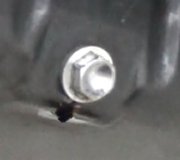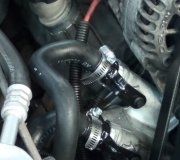Use a gasket scraper as a pry bar and start on one end to lift them up. If they aren't leaking, there's no need to replace them. If they are leaking, there's a gap that is a good place to start prying them up. Once all the old gasket material is cleaned off, check around the bolts holes to see if they're bent and deformed from previous over-tightening. If they are, pound them flat, then look for signs of cracking around them.
Many gaskets have tabs to hold them to the cover while you're installing them. For those that don't, everyone has their favorite method of holding them in place. I've used string tied through the holes. Some people use weatherstrip adhesive, as mentioned previously, but that isn't a sealer and isn't designed for high temperatures. My preference is for a thin film of silicone gasket sealer on both sides of the gasket. That also makes future removal very easy. A lot of valve cover gaskets on newer engines, and differential covers use only silicone sealant and no other gasket. You still need the cork or rubber gasket on yours to get the height necessary to hold the covers up above the rocker arms.
There's two silicone sealants I'm very familiar with and use for everything from gaskets to sealing arcing high voltage transformers in tvs, (and on the $700.00 motherboard for my alignment computer). They are Mopar products available from the Chrysler dealer's parts department. You can get the same stuff from other dealers and auto parts stores too. Chrysler's black stuff stays more rubbery and is a little easier to peel off, but it absolutely will not bond and seal through any film of oil residue. The gray stuff gets a little harder and will bond through a film of oil. It's popular for transmission oil pans that use no other gasket, and they drip fluid for hours after the pan has been removed.
If adding this sealant to a new gasket, the goal is just to help it seal over the tiny imperfections in the casting. Many mechanics use it as a backup to overlooking a small piece of old gasket that could create a new leak. I think of it as a little extra insurance against a repeat leak, and it reduces the urge to over-tighten the new gasket.
When tightening the bolts, 7 - 12 inch pounds if plenty tight. That's easy to achieve with one hand on a quarter inch drive ratchet. Tighter is not better because that will split the gasket or make is squish out and leak.
Tuesday, April 3rd, 2012 AT 4:41 PM



